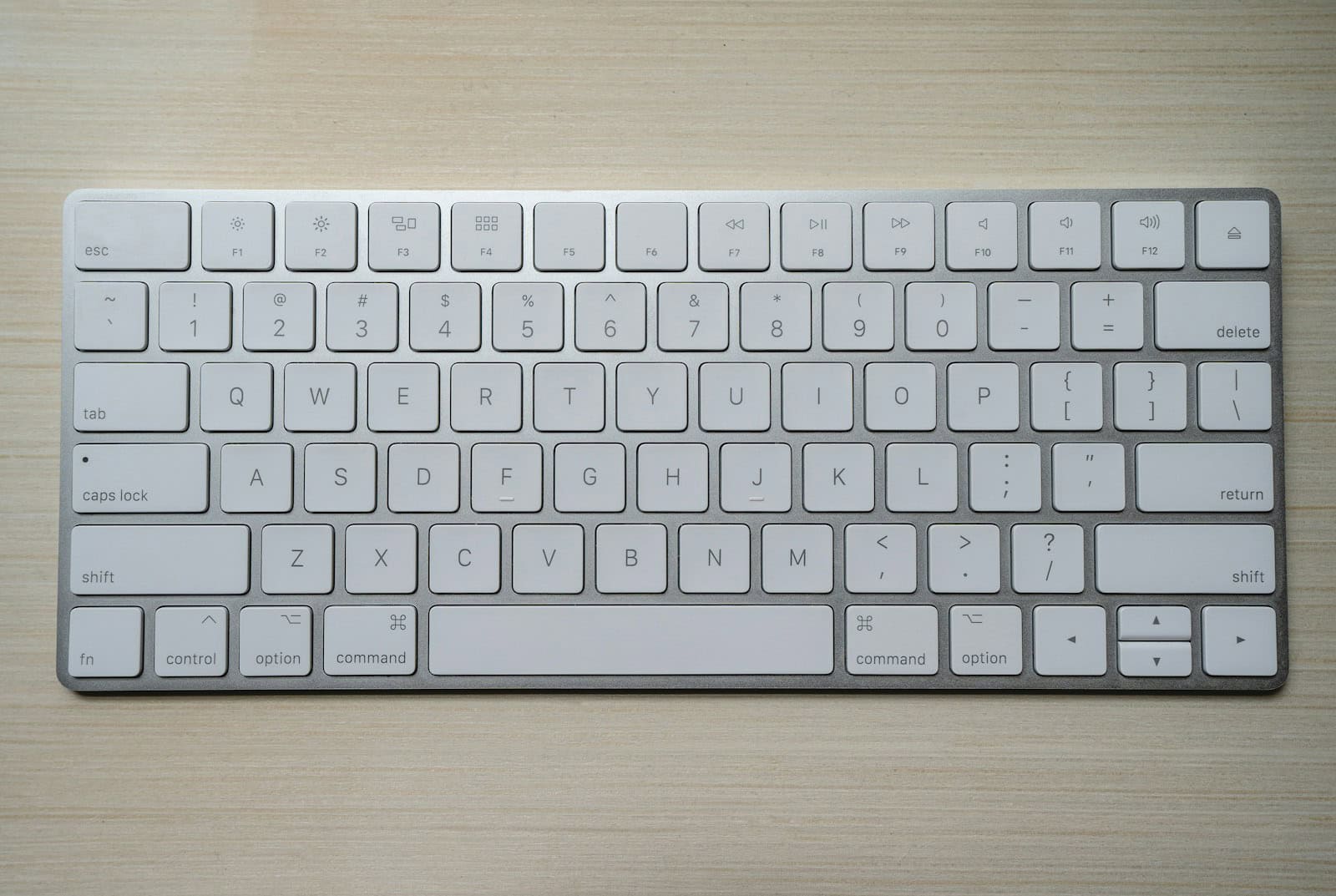The QWERTY keyboard is the most common form of keyboard you’ll find today. It’s called QWERTY because if you look at the top row of letters you’ll see it start with Q, W, E, R, T, and Y. It has been the standard layout for keyboards since the 19th century, but it wasn’t always this way. Many people advocated for other layouts that would allow typists to type faster, but this layout was chosen to prevent jams from quickly struck keys. Yes, you read that correctly – the QWERTY layout was designed to slow down the typist so that there would be fewer jams on the device.
After decades the layout withstood the test of time and is now found on almost every computer keyboard and touchscreen device. It remains the most widely used keyboard layout despite various alternatives. Its development and continued use have been influenced by both history and practicality. The QWERTY layout was devised by Christopher Latham Sholes, the inventor of one of the first successful typewriters. Although it was not designed for speed, many users have found it efficient for typing because of their familiarity with the arrangement.
What Is A QWERTY Keyboard?
The QWERTY keyboard is so ubiquitous in our lives that we rarely think about its design. It’s the standard layout for most keyboards, but have you ever wondered why the letters are arranged that way? Let’s dive into the history and quirks of this iconic keyboard layout.
The Origins of QWERTY
- Typewriter Troubles: The QWERTY layout wasn’t designed for efficiency. It was actually created to solve a problem with early typewriters. When typists typed too fast, the mechanical arms holding the letters would jam. The QWERTY arrangement spaced out commonly used letter pairs to prevent this jamming, sacrificing speed for functionality.
- Remington’s Influence: The layout gained widespread adoption when Remington adopted it for their typewriters in the late 1800s. This success cemented QWERTY as the standard, even though more efficient layouts like Dvorak exist.
QWERTY’s Quirks
The QWERTY layout has some interesting characteristics:
| Feature | Description |
|---|---|
| Most Typed Letters on the Left Side | The left hand does more work in QWERTY, which can be inefficient for some typists. |
| Common Letter Pairs Separated | This was originally designed to prevent typewriter jams but is less relevant with modern keyboards. |
| Vowels and Consonants Alternating | This supposedly helps with finger movement and prevents the same finger from striking consecutive keys, but the effectiveness is debated. |
QWERTY vs. Dvorak: The Efficiency Debate
While QWERTY is the standard, some argue that the Dvorak layout is more efficient. Dvorak places the most common letters on the home row, aiming to reduce finger movement and increase typing speed. However, QWERTY’s dominance makes switching to Dvorak impractical for most people.
Why QWERTY Prevails
Despite its quirks and potential for improvement, QWERTY remains the dominant keyboard layout due to its established familiarity. Most people learn to type on QWERTY keyboards, making it difficult to switch to a new layout. The sheer ubiquity of QWERTY also means most devices and software are designed with this layout in mind.
Key Takeaways
- The QWERTY keyboard has been the prevalent layout since the 19th century.
- It was designed to prevent mechanical jams in early typewriters.
- Despite alternatives, its widespread use persists due to historical precedence and user habituation.
History and Development
The QWERTY keyboard’s journey began in the late 1800s with Christopher Latham Sholes. Its evolution since then has impacted not only typing practices but also keyboard designs globally.
Invention and Design
The QWERTY keyboard layout was created by Christopher Latham Sholes with the aid of friends Samuel W. Soulé and Carlos Glidden. In 1868, they received a patent for the Sholes and Glidden typewriter, which E. Remington and Sons later manufactured. The layout aimed to reduce jams by separating commonly used letter pairs, not to enhance typing speed as is commonly misconceived.
- Inventors: Christopher Latham Sholes, Carlos Glidden, Samuel W. Soulé
- Manufactured by: E. Remington and Sons
- Initial Purpose: To minimize jamming in typewriters
Evolution and Adaptation
The QWERTY layout became standard after Remington No. 2 released, including uppercase and lowercase letters. Adaptations like ISO 9995 emerged as typewriters evolved into computer keyboards. Typists’ needs have often driven such changes, especially as touch typing gained traction.
Contemporary Usage
Now, the QWERTY layout is standard on most devices including personal computers, tablets, and smartphones. It is prevalent in products that use Latin-script alphabets, and touchscreen devices have adapted it as well.
Impact on Typing and Ergonomics
The layout affects typing speed and ergonomics. Some argue that alternate layouts like the Dvorak or Colemak are more efficient. However, QWERTY remains dominant due to widespread use and training.
Global Variations
Different regions use QWERTY variations such as AZERTY in France and QWERTZ in Germany. These reflect language-specific needs and ergonomic considerations.
- France: AZERTY
- Germany: QWERTZ
- Other Variations: Half-QWERTY, KALQ
Technical Aspects
QWERTY’s design affects not just the letters but also functions like Morse code input and paper and ink mechanics in traditional typewriters. Current digital layouts maintain the QWERTY structure, honoring the legacy of its typewriter ancestor.
- Past: Paper and ink mechanics
- Present: Digital device adaptation
- Future Implication: Continues to shape typing practices and keyboard design







